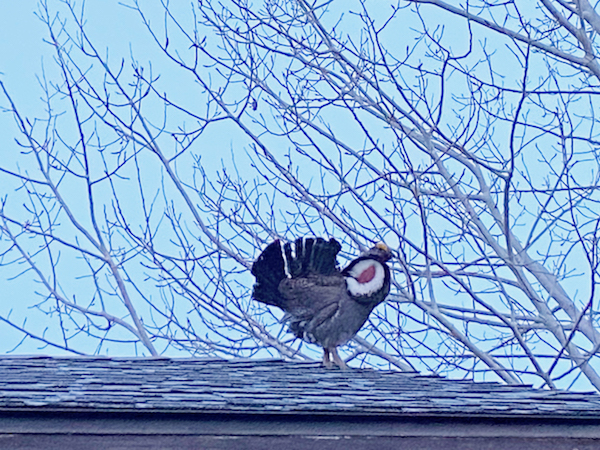BY HARRY WEEKES
From the start of November until the end of April, my morning routine is pretty simple. I get up when I wake up, shuffle to the other end of the house, put on my walking clothes, and head out into Indian Creek. This skulking around happens in the dark, with my mornings guided by either the faint glow of dimmer switches or ambient light from the moon and stars.
All of this changes by May, when there is enough light in the sky by the end of my walks that I am no longer able to distinguish stars in the sky. The Dachshunds, less governed by time than they are by the sun, suddenly find enough light to entice them out of bed and into the kitchen, where I immediately put them out for their own morning rituals.
As Whiskey is new to the planet (he’s the 6-month-old), he is still developing a routine, and figuring out what to make of the world (born in the winter, the sights, smells, and sounds of spring are still novel for him).
On this morning, Olive did her usual business and returned to the door as quickly as possible. Whiskey, for his part, seemed to bask in the emerging morning. He sat side-saddled (as mini-Dachshunds do) on the patio, gently moving his head back and forth, bobbing it ever so slightly as he drank in the smells and let the sounds of the birds wash over him. Brewer’s sparrows sang away, robins chirped loudly, and the first towhees buzzed from the nearby willows.
Moving about, preparing for my own day, it’s easy to pay attention to what’s in front of me, and just as easy not to pay attention to what isn’t. There was something wonderfully peaceful and casual in Whiskey, something that made me take a moment to consider what he was considering. As I watched him, he turned his head up and looked intently into the trees. I followed his gaze to find the silhouette of a female dusky grouse awkwardly working her way about the ends of the branches, happily munching on the aspen catkins. (What’s nice about writing a piece like this after the event is that I can say “female dusky grouse” as though I was able to distinguish that in the twilight. You’ll soon understand how I knew.)
There is something so wonderfully absurd about a heavy-bodied bird like a grouse struggling on the tightropes of thin aspen branches that I figured I had better get a picture. Whiskey took the opportunity to give up the grouse and return to bed.
As I took the picture, two more females joined. And then I started to hear another scratching, and clucking, and thumping. Realizing it came from above, I backed out into the yard to find a male dusky grouse in full display—red throat pouches extended, yellow eyebrow prominent, and tail up and bristling. He danced around the roof in short running bursts, punctuated by directed clucks at the females gathered around their breakfast and over my head.
I had planned for this piece to be about the harriers nesting off our driveway. But I followed the morning gaze of a miniature Dachshund to the trees surrounding my house, a moment I could have passed up in a thousand ways.
Olive, who had watched the whole thing, simply tucked her head back into the cushions, apparently not able to understand why either dog or human would stand in the cold, marveling at the birds.
Harry Weekes is the founder and head of school at The Sage School in Hailey. This is his 52nd year in the Wood River Valley, where he lives with Hilary and one of their three baby adults—Simon. The other members of the flock are Georgia and Penelope (Georgia recently fledged from Davidson College in North Carolina and Penelope is at Middlebury College in Vermont).



